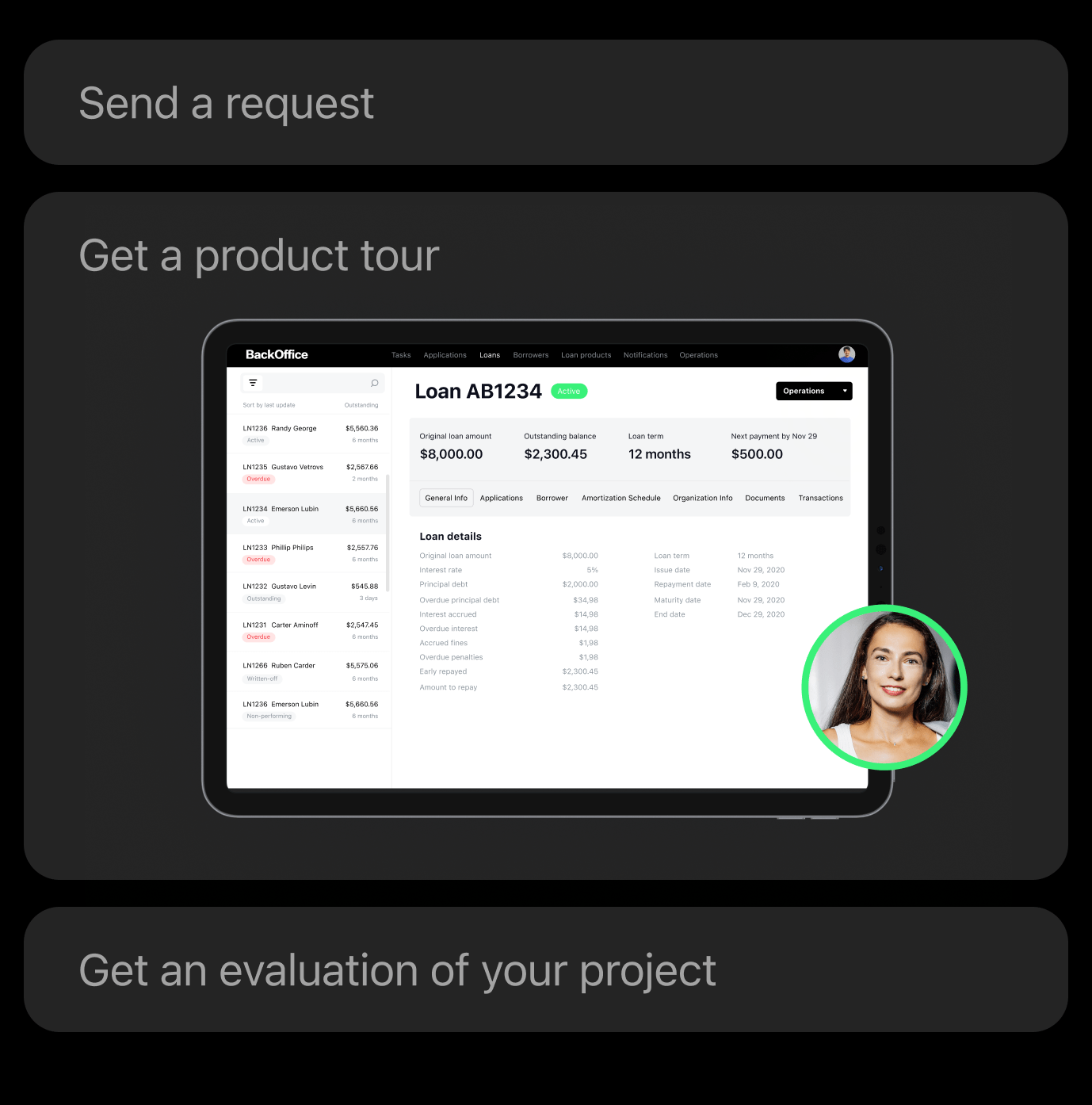Financial Data Security in Online Loans: How to Increase TrustCybercriminals always seem to be one step ahead of honest customers and businesspeople, causing damages in the region of over $6 trillion (USD) globally—and that’s in 2021 alone. Yet, despite the massive investment in preventing cybercrime, with estimates ranging from $60.2 billion to $1.75 trillion, criminals are showing no signs of slowing the pace.
Quite the opposite, with bank data breaches and other types of cyber fraud, predicted to reach $10.5 trillion by 2025. To put this in perspective, $10 trillion is the combined GDP of Japan ($4.9 trillion) and Germany ($4.2 trillion), or the United Kingdom ($3.2 trillion), India ($3.2 trillion), and France ($2.9 trillion), making cybercrime one of the biggest problems in the world today.
Types of data breaches
How to Avoid Fraud in Digital LendingWith such shocking damages, many businesses spend a lot of time strategizing how security and cybercrime can be prevented. This is especially true when it comes to financial data security and banking data breaches, which require providers to take extra care. But before they can do that, they need to know what types of data breaches and cybercrime there are?
Cybercrime can include actions, such as:
- Stolen money
- Fraud
- Productivity losses
- Theft of personal data
- Embezzlement
- Post-attack disruption
- Hacked data and systems
- Ransomware
- Destruction of data or its damage
- Theft of intellectual property
- Financial data breaches
- Etc.
The cybercrime spectrum is quite diverse, and there are no limits on what criminals will think of next, which means that those engaged in fighting and preventing cybercrime constantly have to come up with innovative loan origination solutions that predict cybercriminals behavior before it happens to put a stop to it.
Cybercrime statistics
- Think cybercrime doesn’t pay? It does. The cost of damages attributed to cybercrime in 2021 is $6 trillion. But how much does it cost the criminals? Estimates show that data sold on the dark web can be acquired for as little as just a few dollars. For example, forged US social security numbers can be bought for $2, whereas a cloned Mastercard with a PIN goes for just $25.
- Every 1.12 seconds—that’s how often cybercrime attacks are carried out, and that’s just from the reported numbers.
- Think this is a global North problem—it’s not. The top country compromised by cyberattacks was Colombia and China were two of the worst hit countries.
- Ransomware has affected 14 out of 16 critical infrastructure sectors in the USA. Meaning 87.6% of USA critical infrastructure has been, at one point, affected by cybercriminals.
- According to the cybersecurity firm Kaspersky Labs, Spain, Austria, and Croatia, were worst affected by mobile financial threats, such as a financial data breach, in 2021.
Why preventing data breaches is so important?
Data breaches or criminals having unauthorized access to information or data they should not, can form the root cause of many other cyber-attacks. From stolen passwords to login data to the installation of ransomware, armed with a little bit of info—your data—a criminal can do a lot of damage to you and others.
For example, they can:
- Access accounts and make purchases
- Install ransomware on your computer
- Contact your friends and steal your identity
- Open accounts in your name
- Disrupt your business while you deal with the aftermath
- Etc.
How Automation Improves Compliance in LendingThis is why it’s no wonder that companies value robust cyber security, and that goes double for fintech companies, who deal with all types of data from financial to identity and everything in between. Meaning if you’re planning to upgrade your bank loan origination software (or other) any time soon, now’s the time to start thinking about cybersecurity.
5 Financial data breaches that rocked the world
#1 The First American Corporation Credit Card Data Leak
Total Clients Affected
885 million applications for the company’s credit cards
When did it happen?
May 2019
How did it happen?
Banking Cyber Security: How to Provide Safe Online LoansPicture the scene, it was Memorial Day Weekend in the US, when Brian Krebs, a security researcher, discovered the details of more than 885 million credit card applications made to First American Financial online. These contained details of the clients bank accounts, mortgage records, tax documents, numbers, and IDs.
This occurred due to a web design error—Insecure Direct Object Reference (IDOR)—in which the link to the webpage containing this sensitive information has been created with the intention that it will only be viewed by the appropriate parties but is not protected by a password. As a result, anyone who stumbles upon the link can view it.
The company viewed it as a “Business Logic Flaw,” and while the researcher who stumbled upon didn’t do so in malice, it could easily have come under the eyes of hackers.
How to avoid these types of financial data breach in the future?
- Review security policies and ensure web designers and developers understand the nuances of financial software.
- Create data leak and bank data breach policies to ensure they are in force at your organization.
- Get the right tools and software to protect your and your clients’ data.
#2 Equifax data breach
Total Clients Affected
147 million accounts
When did it happen?
September 2017
How did it happen?
Most sources agree that the Equifax financial data breach was nothing short of a disaster. So much so that in addition to damages done by cyber criminals, the company received a fine of $700 million for failing to communicate with their customers when the breach came to light. So, what actually happened?
Cybercriminals were able to exploit expired encryption certificates and loopholes in the company’s open-source development framework to gain access to over 147 million accounts containing data such as names, addresses, credit card numbers, phone details, emails, etc.
How to avoid these types of financial data breach in the future?
- Trust and transparency are key lessons in this breach, as it’s important for providers to be honest with their clients.
- Keeping on top of all web systems and hiring a team of web developers with experience in financial technology is a good start. This attack could have been prevented had steps been put in place in time.
#3 Heartland Payment Systems hack and break-in
Total Clients Affected
130 million card accounts
When did it happen?
January 2008
How did it happen?
Cybercriminals utilized malware to gain access to ~130 million credit and debit card numbers. This was done via an SQL injection which allowed them to acquire access to Heartland’s corporate network. They then installed sniffer software that intercepted card data as it was in transit. As a result, Albert Gonzales, an American computer hacker, and two associates were arrested.
But that wasn’t all. Soon after the attack, Heartland again proved vulnerable when cybercriminals stole 11 computers from their facilities and compromised the data of another 2,200 users.
How to avoid these types of financial data breach in the future?
- Although Heartland had measures in place, it simply wasn’t enough to prevent the hack. This highlights the need for constant vigilance and upgrades of security policies. In addition, it’s important to highlight that regulatory requirements are the bare minimum when it comes to prevent data breaches—so always seek to do more.
- Ensure external and internal security protocols. Although external security helps to prevent break-ins, when it comes to preventing the theft of financial data, going that extra step with internal security restrictions is vital.
#4 Capital One data leak
Total Clients Affected
100+ million clients in US and Canada
When did it happen?
March 2019
How did it happen?
The Capital One breach occurred when a former Amazon Web Services engineer, Paige A. Thompson, accessed and stole data from one of Capital One’s AWS servers by exploiting a misconfigured web app firewall. This included the social security numbers and bank account details of over 100+ million people.
Capital One was quickly notified of the leak by someone who had seen Thompson’s post on GitHub. Although the cybercriminal was quickly caught this didn’t mean that damage wasn’t done to Capital One or its reputation.
How to avoid these types of financial data breach in the future?
- Always double-check any third-party providers, and ensure they know who has access to your systems. At the very least, complete a risk assessment of all cloud technology used.
- This breach happened because of a misconfigured web app firewall. Make sure all configurations are checked and measures put in place to discover any issues quickly.
#5 JPMorgan Chase hack
Total Clients Affected
83 million accounts
When did it happen?
October 2014
How did it happen?
In what turned out to be a reasonably ‘light’ outcome. Hackers in Brazil acquired root access to over 90 of the company’s servers containing valuable customer data and other information. Instead of leveraging this for a higher gain, they just took some customer details such as names, phone numbers, and emails, which could potentially be used in future cybercrime activity.
Essentially, this happened because during the process of digital transformation and upgrading their systems, a failure to implement security authentication occurred, which allowed hackers to gain access.
How to avoid these types of financial data breach in the future?
- Essentially, this financial data security was caused by a simple security error that could have been corrected. This means that companies implementing any changes need to take care and double-check that there are no potential breaches.
And the latest …iSpoof website fraud
Total Clients Affected
200,000+
When did it happen?
November 2022
How did it happen?
In a breaking news story, fraudsters utilized a ‘spoofing’ website to gather the banking details of hundreds of thousands of people by phoning them with fake calls and texts to acquire their data and make fraudulent transactions.
In a worldwide operation involving the UK, the US, Ireland, Canada, the Netherlands, and Ukraine, among others, over 100 individuals have been arrested to date. It is estimated that this fraud case has cost people over €115 million, with one individual losing over £3 million to fraudsters, with the average loss at an estimated £10,000.
How to avoid these types of financial data breach in the future?
- Awareness-raising by financial providers is one step in how to avoid this type of fraud. Financial bodies must be one step ahead and let their customers know how they will and will contact them, so they don’t fall victim to fraudsters.
- At the same time, it’s important to monitor any suspicious transactions and perform account freezes until the transaction is confirmed by the client. This could mean upgrading security systems and implementing AI fraud detection software.
Psss… Wanna start lending within 90 days?
How to prevent data breaches and ensure cybersecurity?
Whether you’re seeking to release a new product, such as loan servicing software, or trying to stay one step ahead of the competitors and keep your clients safe from cyber criminals, one area you’ll need to pay closer attention to is the step to take on how to avoid data breaches—because prevention is always better than dealing with the aftermath of a data breach.
Often data breaches originate from very simple errors, such as security features overlooked when upgrading software, additional security features not being implemented, or even physical access issues. This is why it’s vital to make sure all boxes are ticked—not just the ones from the regulator—when it comes to preventing data breaches at your fintech company.













